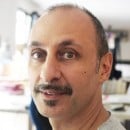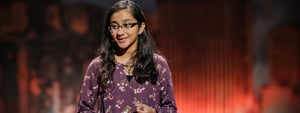What inspires a teenager to take on the great scientific and engineering challenge of inventing the first ‘intelligent’ dressing? Anushka Naiknaware, who at the age of thirteen has become the youngest winner of the Google Science Fair, explains:
One thing that stood out to me was a statistic that said that the number of people in the United States with chronic wounds exceeded the total number of people suffering from the most serious forms of cancer.
A wound becomes chronic when a person with extensive wounds cannot heal normally. This can happen when dressings are replaced too often, causing patients severe pain and prolonged infection. But what causes this daisy chain of negative effects?
So, as I started doing more research, I found that there was a correlation between the moisture level inside a wound dressing and the stage of healing that the chronic wound would be at. So, I decided, why don’t I design something to measure the moisture level within the wound so this can help doctors and patients treat their wounds better. And essentially, expedite the healing process.
Anushka therefore came up with the idea of creating a dressing that was not only capable of killing the bacteria found in the wound, but also of alerting the user when it had to be changed. She designed and tested a method for embedding nanoparticles of graphene, via ink printed into fractal patterns, within the bandages to accurately detect when moisture levels have dropped and when the dressing needs to be changed, but without having to remove it from the affected area in order to check. This data, collected in real time, can then be sent via a wireless connection with any device, even a telephone.
The final result is really impressive: doctors can see the exact time that the medication has to be changed and know everything about the wound immediately, such as if there are signs of the start of an infection, by measuring its temperature and pH value…
In addition to the medical and engineering side of things, Anushka was also actively involved in the production of her invention, paying great attention to the executive part of the project:
Since this product would be readily interacting with the body, it had to be biocompatible, it also had to be low-cost, as I was designing it and paying for it myself. It also had to be mass-manufacturable, because I wanted it to be made anywhere, for anyone.
Anushka is one of the many young people around the world that have shown enthusiasm and the ability to realize their dreams, even if they don’t have many resources at their disposal. Hers is an example that inspires hope for our future:
My design was successful – however, science never ends. There’s always something to be done, something to be refined. However, what I learned from this experience was what’s more important is having the right attitude, making a difference and contributing to research, even though I’m a 14-year-old working in her garage on something that she doesn’t completely understand: that’s what inspired me to keep going, and I hope it inspires many others to also do work like this.

